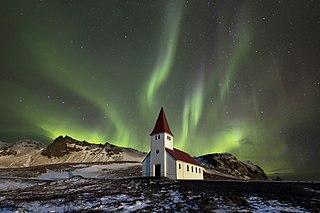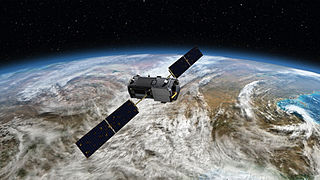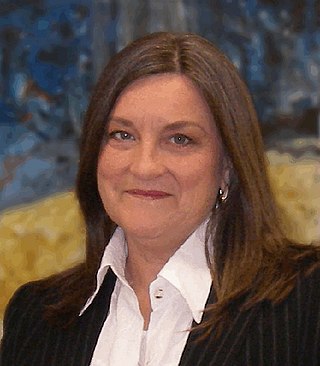
Gordon Greeley Shepherd is a Canadian space scientist, currently a Distinguished Research Professor Emeritus at York University

Gordon Greeley Shepherd is a Canadian space scientist, currently a Distinguished Research Professor Emeritus at York University
Gordon Shepherd attended the University of Saskatchewan, where he was awarded a Bachelor of Engineering in Engineering Physics with great distinction in 1952. He continued graduate work there, obtaining an M.Sc. in Physics in 1953, supervised by Donald Hunten. He then moved to the University of Toronto where he obtained his Ph.D. in Physics in 1956, supervised by Harry Welsh. Following his Ph.D., he was appointed Assistant Professor of Physics at the University of Saskatchewan in 1957, becoming Associate Professor in 1964. In 1969 he moved to York University in Toronto as Full Professor, becoming Distinguished Research Professor in 1993, and serving as Director of the Centre for Research in Earth and Space Science from 1995 to 2009.
Professor Shepherd began his research with studies of the aurora borealis, conceiving new instruments for its observation. The implementation was done by his students, postdocs and research associates of which not all can be mentioned here. These began with the Fabry-Perot Interferometer (John Nilson, Leroy Cogger, Steven Peteherych). The most notable was introducing “field-widening” to the Michelson interferometer (Ronald Hilliard, Harold Zwick) and operating it by scanning over a single fringe to obtain atmospheric temperatures from both aurora and airglow. [1] His ground-based observations (Robert Peterson, Kenneth Paulson) were later extended to measurements from rockets (John Miller, Ashley Deans), flown from the Churchill Research Range at Churchill, Manitoba [2] and Cape Parry on the Arctic coastline. [3] He then moved to satellite measurements with the Red Line Photometer (RLP) on the Canadian ISIS-II satellite (Frank Bunn, Frank Thirkettle), launched in 1971. [4] This instrument mapped the auroral O(1D) red line emission, produced by low energy electrons, specifically in the dayside cusp. [5] A wide-angle Michelson interferometer was then conceived for the measurement of winds from space, called the Wind Imaging Interferometer (WINDII), launched on NASA’s Upper Atmosphere Research Satellite (UARS) (William Gault, Brian Solheim, Charles Hersom, Yves Rochon) in 1991. [6] It operated until 2003, providing new information on the dramatic influence of winds on processes in the upper atmosphere through migrating and non-migrating tides and planetary waves (Charles McLandress, Shengpan Zhang), [7] (Guiping Liu, Young-Min Cho). [8] Other versions of the field-widened instrument were developed, the Polarizing Atmospheric Michelson Interferometer and the Spatial Heterodyne Spectrometer (John Bird (scientist), [9] Stephen Brown). More recently, the superposition of these zonal waves was proposed for the existence of “bright nights”, a phenomenon known since Roman times of rare nights which were not dark, but exceptionally bright. [10] WINDII data were most recently used to describe the existence of a high-latitude “wind wall”, with reversals of zonal wind from eastward to westward with velocities of up to 600 meters/second (Marianna Shepherd). [11]
Shepherd became a Fellow of the Royal Society of Canada in 1981, a Fellow of the Canadian Aeronautics and Space Institute in 1981, was a Killam Fellow from 1991–93, received a Vikram Sarabhai Professorship from the Physical Research Laboratory, India, in 1998, became a Fellow of the American Geophysical Union in 1999, received the Canadian Space Agency John H. Chapman Award of Excellence in 2003 and the Canadian Aeronautics and Space Institute Alouette Award in 2004. He received the SCOSTEP Distinguished Research Scientist award in 2014 and the COSPAR William Nordberg Medal in 2016.

An aurora , also commonly known as the northern lights or southern lights, is a natural light display in Earth's sky, predominantly seen in high-latitude regions. Auroras display dynamic patterns of brilliant lights that appear as curtains, rays, spirals, or dynamic flickers covering the entire sky.

Rhea is the second-largest moon of Saturn and the ninth-largest moon in the Solar System, with a surface area that is comparable to the area of Australia. It is the smallest body in the Solar System for which precise measurements have confirmed a shape consistent with hydrostatic equilibrium. It was discovered in 1672 by Giovanni Domenico Cassini.

The Michelson interferometer is a common configuration for optical interferometry and was invented by the 19/20th-century American physicist Albert Abraham Michelson. Using a beam splitter, a light source is split into two arms. Each of those light beams is reflected back toward the beamsplitter which then combines their amplitudes using the superposition principle. The resulting interference pattern that is not directed back toward the source is typically directed to some type of photoelectric detector or camera. For different applications of the interferometer, the two light paths can be with different lengths or incorporate optical elements or even materials under test.

Airglow is a faint emission of light by a planetary atmosphere. In the case of Earth's atmosphere, this optical phenomenon causes the night sky never to be completely dark, even after the effects of starlight and diffused sunlight from the far side are removed. This phenomenon originates with self-illuminated gases and has no relationship with Earth's magnetism or sunspot activity.

The TIMED mission is dedicated to study the influences energetics and dynamics of the Sun and humans on the least explored and understood region of Earth's atmosphere – the Mesosphere and Lower Thermosphere / Ionosphere (MLTI). The mission was launched from Vandenberg Air Force Base in California on 7 December 2001 aboard a Delta II rocket launch vehicle. The project is sponsored and managed by NASA, while the spacecraft was designed and assembled by the Applied Physics Laboratory at Johns Hopkins University. The mission has been extended several times, and has now collected data over an entire solar cycle, which helps in its goal to differentiate the Sun's effects on the atmosphere from other effects. It shared its Delta II launch vehicle with the Jason-1 oceanography mission.

Cluster II is a space mission of the European Space Agency, with NASA participation, to study the Earth's magnetosphere over the course of nearly two solar cycles. The mission is composed of four identical spacecraft flying in a tetrahedral formation. As a replacement for the original Cluster spacecraft which were lost in a launch failure in 1996, the four Cluster II spacecraft were successfully launched in pairs in July and August 2000 onboard two Soyuz-Fregat rockets from Baikonur, Kazakhstan. In February 2011, Cluster II celebrated 10 years of successful scientific operations in space. In February 2021, Cluster II celebrated 20 years of successful scientific operations in space. As of March 2023, its mission has been extended until September 2024. The China National Space Administration/ESA Double Star mission operated alongside Cluster II from 2004 to 2007.

A Birkeland current is a set of electrical currents that flow along geomagnetic field lines connecting the Earth's magnetosphere to the Earth's high latitude ionosphere. In the Earth's magnetosphere, the currents are driven by the solar wind and interplanetary magnetic field and by bulk motions of plasma through the magnetosphere. The strength of the Birkeland currents changes with activity in the magnetosphere. Small scale variations in the upward current sheets accelerate magnetospheric electrons which, when they reach the upper atmosphere, create the Auroras Borealis and Australis.

In climate science, longwave radiation (LWR) is electromagnetic thermal radiation emitted by Earth's surface, atmosphere, and clouds. It may also be referred to as terrestrial radiation. This radiation is in the infrared portion of the spectrum, but is distinct from the shortwave (SW) near-infrared radiation found in sunlight.
John Adrian Pyle is a British atmospheric scientist, Director of the Centre for Atmospheric Science in Cambridge, England. He is a Professor in the Department of Chemistry at the University of Cambridge, and since 2007 has held the 1920 Chair of Physical Chemistry in the Chemistry Department. He is also a Fellow of the Royal Society and of St Catharine's College, Cambridge.
Satya Prakash is an Indian plasma physicist and a former senior professor at the Physical Research Laboratory. He is known for his studies on Langmuir probes and other contributions in space and plasma sciences. A protégé of Vikram Sarabhai, Satya Prakash is an elected fellow of all the three major Indian science academies such as Indian Academy of Sciences, Indian National Science Academy and National Academy of Sciences, India as well as the Gujarat Science Academy and is a recipient of the Hari Om Ashram Prerit Senior Scientist Award. The Government of India honored him with Padma Shri, the fourth highest Indian civilian award for his contributions to the discipline of Physics, in 1982.

Solar wind Magnetosphere Ionosphere Link Explorer (SMILE) is a planned joint venture mission between the European Space Agency and the Chinese Academy of Sciences. SMILE will image for the first time the magnetosphere of the Sun in soft X-rays and UV during up to 40 hours per orbit, improving our understanding of the dynamic interaction between the solar wind and Earth's magnetosphere. The prime science questions of the SMILE mission are

In solar physics, heliospheric pickup ions are created when neutral particles inside the heliosphere are ionized by either solar ultraviolet radiation, charge exchange with solar wind protons or electron impact ionization. Pickup ions are generally characterized by their single charge state, a typical velocity that ranges between 0 km/s and twice the solar wind velocity (~800 km/s), a composition that reflects their neutral seed population and their spatial distribution in the heliosphere. The neutral seed population of these ions can either be of interstellar origin or of lunar-, cometary, or inner-source origin. Just after the ionization, the singly charged ions are picked up by the magnetized solar wind plasma and develop strong anisotropic and toroidal velocity distribution functions, which gradually transform into a more isotropic state. After their creation, pickup ions move with the solar wind radially outwards from the Sun.

Space-based measurements of carbon dioxide are used to help answer questions about Earth's carbon cycle. There are a variety of active and planned instruments for measuring carbon dioxide in Earth's atmosphere from space. The first satellite mission designed to measure CO2 was the Interferometric Monitor for Greenhouse Gases (IMG) on board the ADEOS I satellite in 1996. This mission lasted less than a year. Since then, additional space-based measurements have begun, including those from two high-precision satellites. Different instrument designs may reflect different primary missions.

STEVE is an atmospheric optical phenomenon that appears as a purple and green light ribbon in the sky, named in late 2016 by aurora watchers from Alberta, Canada. According to analysis of satellite data from the European Space Agency's Swarm mission, the phenomenon is caused by a 25 km (16 mi) wide ribbon of hot plasma at an altitude of 450 km (280 mi), with a temperature of 3,000 °C and flowing at a speed of 6 km/s (3.7 mi/s). The phenomenon is not rare, but had not been investigated and described scientifically prior to that time.

John Clifford Bird is a Canadian engineer, scientist, and journalist. Bird’s research has included laser physics, atmospheric physics, and materials in microgravity. He broke the world altitude record for hang gliding by launching from a helium balloon at 35,000 ft, and spent a year at the Amundsen–Scott South Pole Station, which was documented in his book One Day, One Night: Portraits of the South Pole.
M. Joan Alexander is an atmospheric scientist known for her research on gravity waves and their role in atmospheric circulation.
Cora Einterz Randall is an atmospheric scientist known for her research on particles in the atmosphere, particularly in polar regions.
Cynthia Cattell is a space plasma physicist known for her research on solar flares and radiation belts.

Patricia Reiff is an American space physicist at Rice University, known for her research on space weather and for engaging the public about science.
Michelle F. Thomsen is space physicist known for her research on the magnetospheres of Earth, Jupiter, and Saturn.